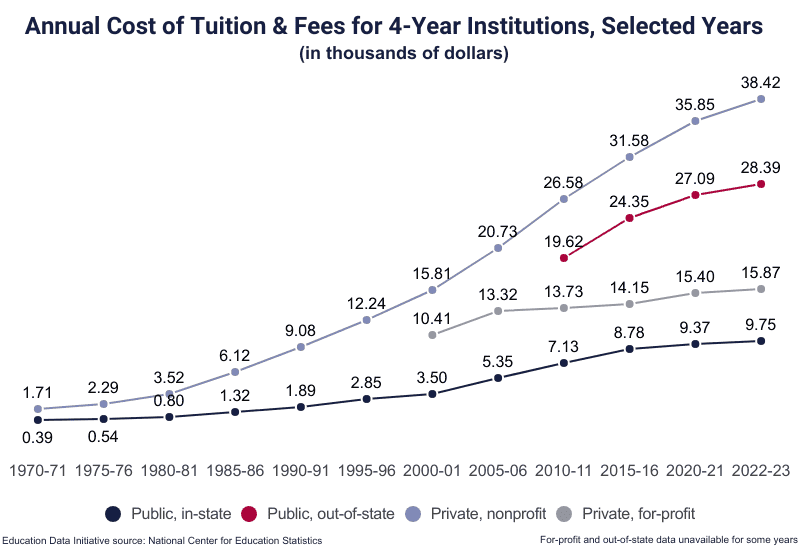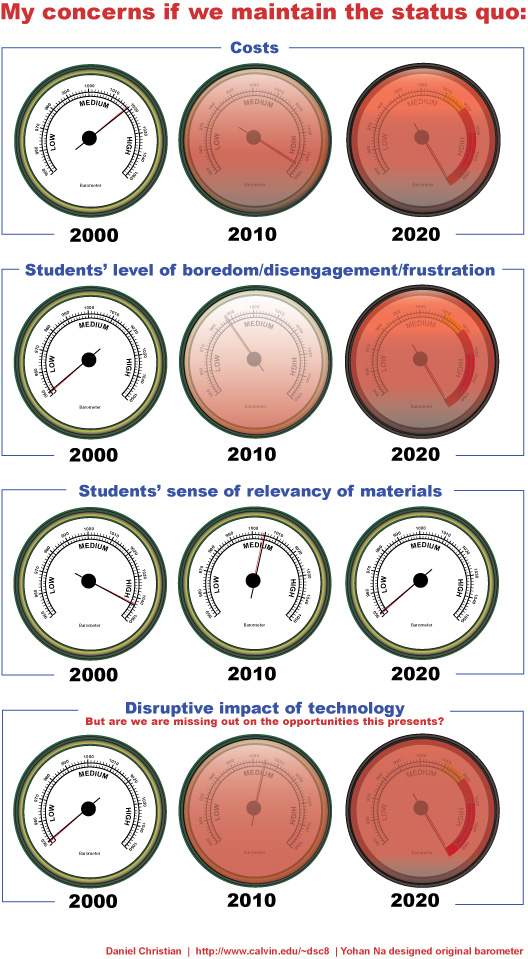How the national debt affects the U.S. — and you — in 10 charts — from washingtonpost.com by Jacob Bogage; this is a GIFTED article
The national debt already exceeds $36 trillion and is growing at historic rates. That has cascading consequences for the government and economy.
What are colleges’ legal options when threatened with federal funding cuts? — from highereddive.com/ by Lilah Burke
Higher education experts said colleges could work together or lean on their associations if they take up a legal fight against the Trump administration.
Understand your allies
In fact, colleges may struggle to fight the administration on their own.
“I don’t think that institutions should necessarily fight it by themselves,” said Jeffrey Sun, a higher education and law professor at the University of Louisville. “I don’t think they’ll win.”
What will have more power is several institutions, or even many, working together to fight the attacks on higher education.
“I don’t think we have an option unless we work in collective action,” Sun said.
Harvard University won’t yield to Trump administration’s demands— from highereddive.com by Natalie Schwartz
Alan Garber, the Ivy League institution’s president, said the university wouldn’t forfeit its “independence or its constitutional rights.”
Harvard University President Alan Garber said Monday that officials there would not yield to the Trump administration’s litany of demands to maintain access to federal funding, arguing the federal government had overstepped its authority by issuing the ultimatum.
“The University will not surrender its independence or relinquish its constitutional rights,” Garber wrote in a community message.
The move tees up a battle between the Ivy League institution and the Trump administration, which threatened the university with the loss of $9 billion in federal funding over what it claimed was a failure to protect Jewish students from antisemitism.
Harvard Professors Sue the Trump Administration While Other Universities Are Targeted — from iblnews.org
Two groups representing Harvard University professors (the American Association of University Professors and the Harvard faculty chapter) filed a lawsuit against the Trump Administration on Friday, saying that the threat to cut billions in federal funding for the institution violates free speech and other First Amendment rights.
The Trump Administration announced two weeks ago that it reviewed about $9 billion in federal funding that Harvard receives and would send a list of demands to unfreeze the money.
In a statement, Andrew Manuel Crespo, a law professor at Harvard and general counsel of the AAUP-Harvard Faculty Chapter, said the “Trump administration’s policies are a pretext to chill universities and their faculties from engaging in speech, teaching, and research that don’t align with President Trump’s views.”
OPINION: For our republic to survive, education leaders must remain firm in the face of authoritarianism — from hechingerreport.org by Jason E. Glass
We face direct threats to the values around access, opportunity and truth our schools are meant to uphold
Across the country, education leaders are being forced to make some tough decisions — to choose between defending core values, such as equity and historical truth, or yielding to political coercion in hopes of avoiding conflict. There is no strategy that does not involve conflict and trade-offs. Every education leader operates in their own political context with unique legal and cultural constraints.
But make no mistake: Inaction is not neutral. Even the decision to do nothing is a choice, one that has consequences.
Northwestern to self-fund federally threatened research — from highereddive.com by Laura Spitalniak
Leaders at the well-known institution said the support would sustain “vital research” until they had a “better understanding of the funding landscape.”
Northwestern University will pull from its coffers to continue funding “vital research” that has been threatened by the Trump administration, the private institution announced Thursday.
Trump is bullying, blackmailing and threatening colleges, and they are just beginning to fight back — from hechingerreport.org by Liz Willen
After Harvard rejected the president’s demands, more university leaders have started to speak out — but many say a bigger response is needed
Many hope it is the beginning of a new resistance in higher education. “Harvard’s move gives others permission to come out on the ice a little,” McGuire said. “This is an answer to the tepid and vacillating presidents who said they don’t want to draw attention to themselves.”
Harvard paved the way for other institutions to stand up to the administration’s demands, Ted Mitchell, president of the American Council on Education, noted in an interview with NPR this week.
Stanford University President Jonathan Levin immediately backed Harvard, noting that “the way to bring about constructive change is not by destroying the nation’s capacity for scientific research, or through the government taking command of a private institution.”
“I tell them, you will never regret doing what is right, but if you allow yourself to be co-opted, you will have regret that you caved to a dictator who doesn’t care about you or your institution.”
What’s Happening at the Social Security Administration? Here’s What People With Disabilities Need to Know. — from thearc.org by Jackie Dilworth
Millions of people with disabilities rely on Social Security benefits to survive. Recent changes at the Social Security Administration (SSA) may make accessing these benefits harder than ever. Long wait times, office closures and staff cuts, and policy rollbacks are already raising concerns and exacerbating customer service issues. Here’s what you need to know.
Staffing Cuts and Office Closures
In 2025, SSA has announced a dramatic reduction in staff and offices, including:
- Plans to cut 7,000 employees (over 12% of the agency’s workforce).
- Closure of 60% of SSA’s 10 regional offices, reducing key staff that help resolve problems with peoples’ benefits.
- Closure of SSA’s Office of Civil Rights and Equal Opportunity, which handled reasonable accommodation requests and managed the agency’s civil rights complaints, including public complaints of discrimination on the basis of disability. This office’s statutory responsibilities have reportedly been divided and moved to other divisions within SSA.
Why does this matter? SSA workers process disability applications, answer calls, and help people navigate complex benefit rules. With fewer staff and the consolidations of regional offices, wait times could get even worse. The loss of key staff also raises concerns about SSA’s ability to modernize, maintain, and improve essential services, further limiting accessibility for beneficiaries. Modernizing SSA’s operations requires long-term investments in systems and processes that are being undercut by these changes.
Is College Worth It? — from pewresearch.org by Richard Fry, Dana Braga, and Kim Parker
As economic outcomes for young adults with and without degrees have improved, Americans hold mixed views on the value of college
From DSC:
I post items like this in the hopes that those working within the world of higher education will lower the price of obtaining a degree while moving much more aggressively to offer more affordable ways of learning throughout one’s life.
A relevant addendum on 6/6/24:
Universities Try 3-Year Degrees To Save Students Time, Money — from the74million.org by Elaine S. Povich
As states explore shorter degrees, some faculty say they undercut students’ education.
With college costs rising and some students and families questioning the return on investment of a four-year degree, a few pioneering state universities are exploring programs that would grant certain bachelor’s degrees in three years.
The programs, which also are being tried at some private schools, would require 90 credits instead of the traditional 120 for a bachelor’s degree, and wouldn’t require summer classes or studying over breaks. In some cases, the degrees would be designed to fit industry needs.












